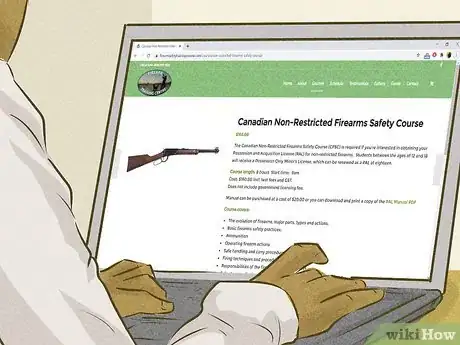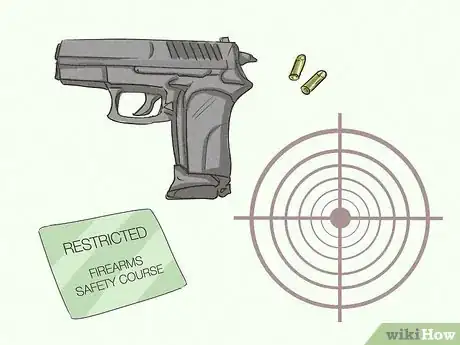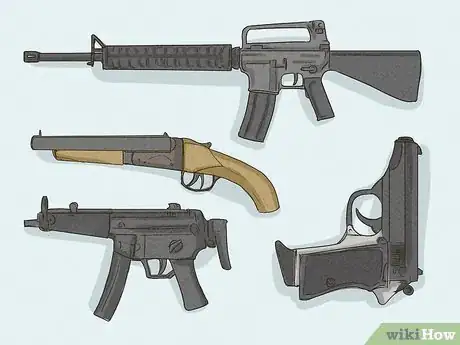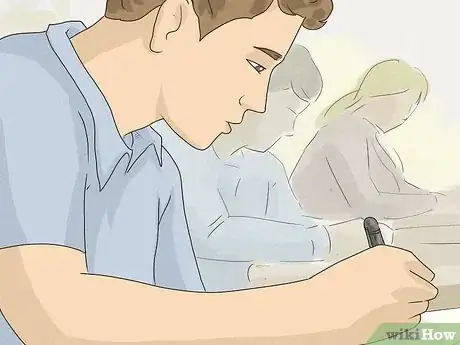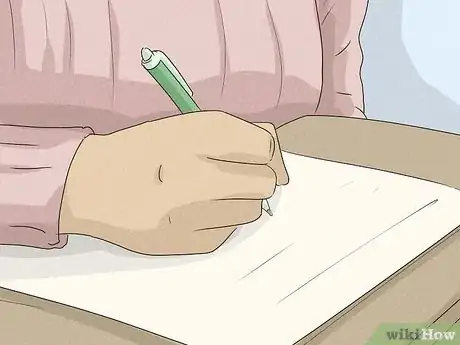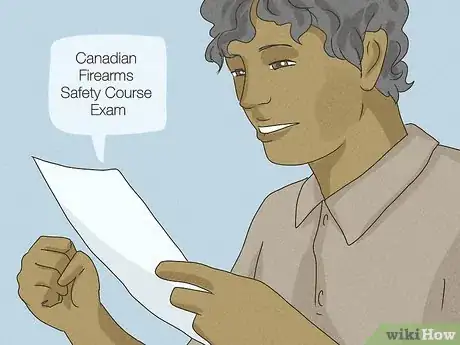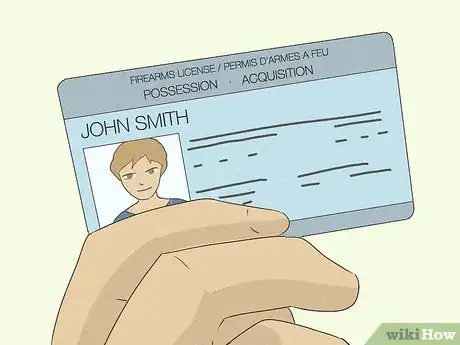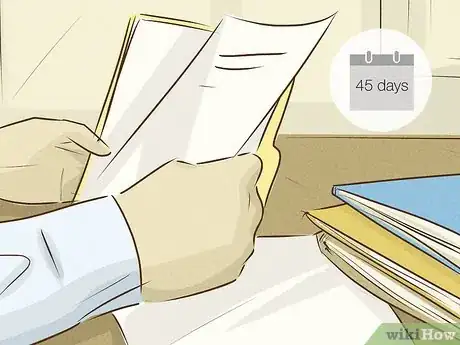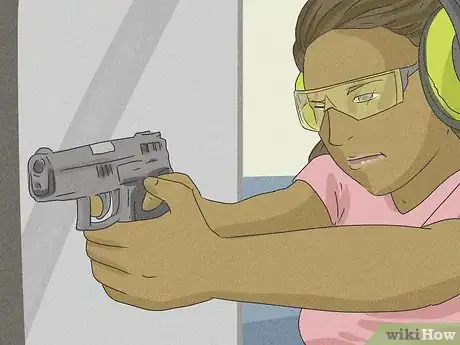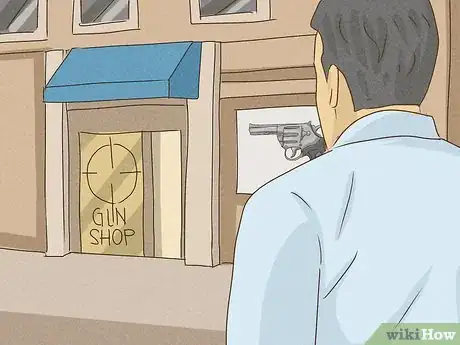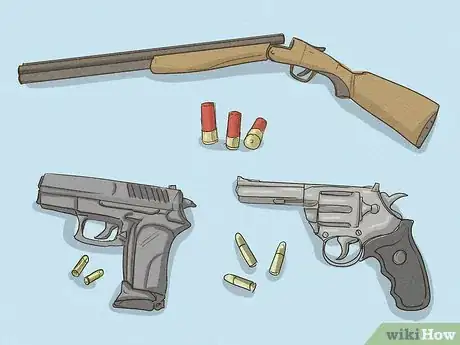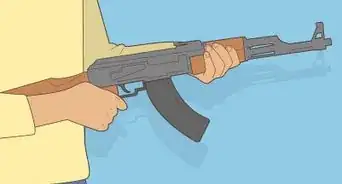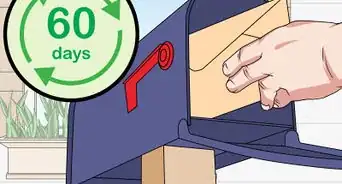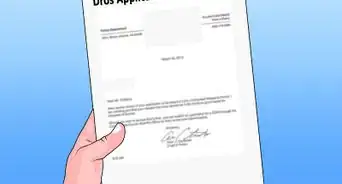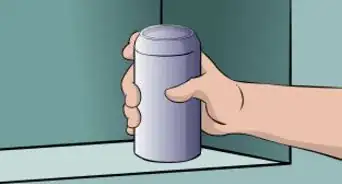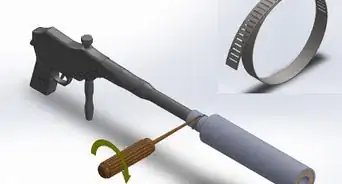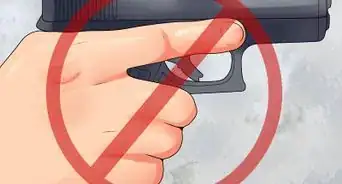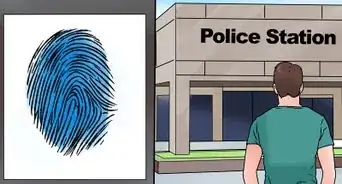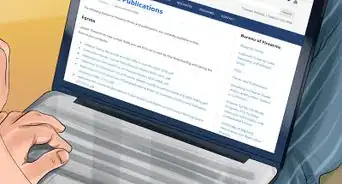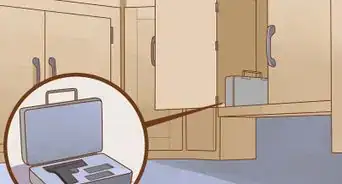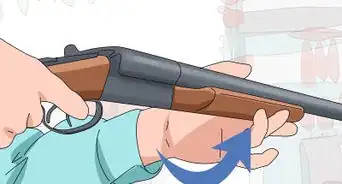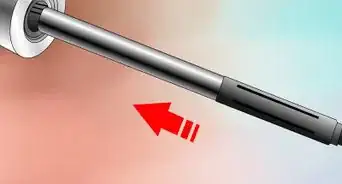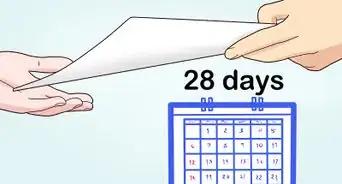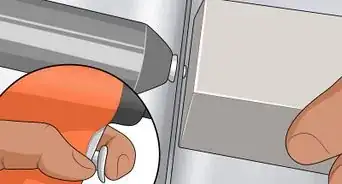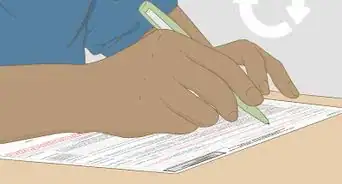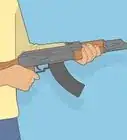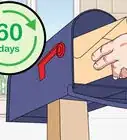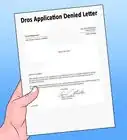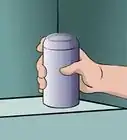This article was co-authored by wikiHow Staff. Our trained team of editors and researchers validate articles for accuracy and comprehensiveness. wikiHow's Content Management Team carefully monitors the work from our editorial staff to ensure that each article is backed by trusted research and meets our high quality standards.
There are 11 references cited in this article, which can be found at the bottom of the page.
wikiHow marks an article as reader-approved once it receives enough positive feedback. In this case, 89% of readers who voted found the article helpful, earning it our reader-approved status.
This article has been viewed 183,781 times.
Learn more...
Whether you're into hunting, like participating in shooting competitions, or enjoy shooting at the gun range, there are many fun reasons to buy a gun. However, guns can also be dangerous. For this reason, you'll be required to complete safety courses and pass a firearms safety exam before you can purchase firearms in Canada. There is also a long application process that includes background checks, so be prepared to wait a few months before you can buy your first firearm.
Steps
Knowing Which Type of Gun License You Need
-
1Get a non-restricted firearms license. Non-Restricted firearms are ordinary rifles, shotguns, or combination guns that are not listed as prohibited (see step below for restricted firearms). The majority of civilian gun-owners in Canada have non-restricted firearms. To get this license, you'll need to take the Canadian Firearms Safety Course (CFSC).[1]
-
2Get a restricted firearms license if you wish to own a restricted gun. People can be licensed to acquire a restricted firearm for target practice, target shooting competitions, or as part of a collection. Individuals must be at least 18 years old to get a restricted firearms license. Individuals under 18 years of age can use restricted firearms if they are under the direct supervision of a licensed adult. To get this license, you'll need to take the Canadian Restricted Firearms Safety Course (CRFSC).
- Restricted guns include:
- Most handguns
- Semi-automatic centre-fire rifles or shotguns with barrel lengths less than 470 mm (18.5 inches).
- Rifles or shotguns that can fire when their overall length is reduced by folding or telescoping to less than 660 mm (26 inches)[2]
- Restricted guns include:
-
3Figure out if the guns you own (or wish to own) are prohibited. Individuals are only allowed to own prohibited firearms if one was registered in their name when it became prohibited. Otherwise, no license will allow you to shoot with prohibited guns.
- Prohibited guns include:
- Handguns that have a barrel less than 105 mm in length
- Handguns that are designed to discharge a 25 or 32 calibre cartridge (unless being used for sporting competitions)
- Firearms that are adapted from a rifle or shotgun, meaning they've been sawed, cut, or altered in any way.
- Automatic firearms[3]
- Prohibited guns include:
Taking the Canadian Firearms Safety Course (CFSC)
-
1Take the Canadian Firearms Safety Course (CFSC). This is required before you even send in a firearms application.[4] This course was developed by the provinces and territories of Canada, and national organizations with an interest in firearms safety. Classroom participation in the CFSC is mandatory to be eligible to apply for a Possession and Acquisition License. Once you complete the course, you'll have to pass the Canadian Firearms Safety Course Exam.
- The Canadian Firearm Safety Course (CFSC) and test costs $150.00, not including taxes.
- Topics included in the Canadian Firearms Safety Course (CFSC) are:
- The evolution of firearms, major parts, types and actions
- Basic firearms safety practices
- Ammunition
- Operating firearms
- Safe handling and carry procedures
- Firing techniques and procedures
- Care of non-restricted firearms
- Responsibilities of firearms owners and users
- Safe storage, display, transportation and handling of non-restricted firearms.
-
2Take an additional safety course in order to get a license for restricted firearms. You must take the Canadian Restricted Firearms Safety Course (CRFSC) in addition to the CFSC if you want the “Restricted” designation (for handgun and restricted rifle ownership) firearms license.[5]
- The Canadian Restricted Firearm Safety Course (CRFSC) and test costs $150.00, not including taxes. If you're taking both the CFSC and the CRFSC at the same time, the total cost is $260.00. not including taxes.
- This course covers:
- The evolution of firearms, major parts, types and actions
- Basic handgun safety practices;
- Ammunition
- Operating handgun actions
- Firing techniques and procedures for handguns
- Care of restricted firearms
- Responsibilities of firearms owners and users
- Safe storage, display, transportation and handling of restricted firearms
-
3Pass the Canadian Firearms Safety Course Exam. This exam covers everything that you will have learned in the safety course. It has a written multiple choice component and a firearms-handling portion. You will not be required to shoot any firearms during the exam.
- The written portion of the exam has 50 multiple choice questions. In order to pass this part of the exam, all applicants must answer at least 80% of the questions correctly.
- The practical element of the exam requires all applicants to handle a minimum of three types of firearms (for example; pump action, lever action and bolt action). Points are deducted when a gun is pointed outside of the designated safe area, the wrong type of ammunition is used, or if the applicant has poor trigger control. All applicants must score at least 80% on this portion of the exam as well.[6]
Getting a Possession and Acquisition License
-
1Apply for a Possession and Acquisition License (PAL). You must have a license to own and register a firearm and to buy ammunition. You must renew your license every 5 years for as long as you possess firearms in Canada. Your safety course instructor can usually provide you with the application form, but you can also get it online. It is called the CAFC 921E / RCMP 5592 form.[7]
- You'll need to provide proof of identity. Valid types of identification are federal, provincial, territorial or municipal employee identification cards, a passport, a birth certificate, citizenship certificate, or permanent resident document.
- A Minors' License can enable a 12-17 year old to borrow a non-restricted rifle or shotgun for approved purposes (hunting or target shooting, for example). Applicants must take Canadian Firearms Safety Course and pass the exam.[8]
-
2Wait while your application is processed. A variety of background checks are done when processing a firearms license application.[9] If there are any uncertainties, in-depth investigations are conducted. You may be interviewed or questioned during this process. A minimum of forty-five (45) days is required to process a PAL application.
-
3Get Authorization to Transport (ATT) if you'll be using restricted firearms. For those who wish to own restricted firearms (handguns, short-barreled semi-automatic rifles, etc.), additional paperwork must be filled out. In order to transport a restricted firearm (like taking it to the gun range), you just get an ATT.[10]
Purchasing the Firearm
-
1Visit a gun shop. There are numerous gun stores throughout Canada, so look online to find a gun store near you. You'll need to provide a valid PAL and an additional form of identification to purchase a firearm.
- Even if you are buying a gun from a private individual, you are required to make the transaction through a licensed firearm dealer.
-
2Choose a firearm. Most gun shops will allow you to touch and hold the firearms before you purchase them, some gun shops even have their own firing ranges. If you're unsure of what type of firearm you want to purchase, ask the employees for advice.
- Purchase ammunition. You must be at least 18 years old to buy ammunition, have a valid PAL, and show a secondary form of identification. If you're unsure of what type of ammunition to buy, consult with the employees of the gun store. Anyone between 12-18 years old can purchase ammunition if they provide a PAL and valid identification.[11]
-
3Register your gun. Gun registration can be done at most gun shops or online. When registering your gun, you'll be required to provide your firearms licence number other identification information. You'll also need to provide seller's name and ID number, the date the firearm was sold, and the firearms reference table (FRT) number provided by the seller.
- You can call 1-800-731-4000 for help verifying a firearm.[12]
Community Q&A
-
QuestionI have a rifle from the 30s. Do I need to license it? I do not have a PAL or any license.
 Community AnswerAbsolutely. I believe they're non-restricted firearms, therefore a standard non-restricted CFSC will do. Take the one day course, pass the exams and apply for a license. It is illegal to possess a firearm in Canada without a federal license. All FACs and POLs have expired.
Community AnswerAbsolutely. I believe they're non-restricted firearms, therefore a standard non-restricted CFSC will do. Take the one day course, pass the exams and apply for a license. It is illegal to possess a firearm in Canada without a federal license. All FACs and POLs have expired. -
QuestionI got my Firearms Acquisition Certificate in 1992 or 1993. Do I have to take the course again?
 Community AnswerAll FAC's have expired years ago. You must now take the Canadian Firearms Safety Course to obtain a Possession and Acquisition License (POL's are no longer valid) to purchase non-restricted firearms (i.e. most shotguns, rifles). If you would like to purchase restricted firearms (i.e. pistols, some other firearms deemed to be restricted by the RCMP), you must take the Canadian Restricted Firearms Safety Course to obtain an RPAL (Restricted PAL). To take a course for both the restricted and non-restricted takes 2 days and consists of a written and practical exam for each category.
Community AnswerAll FAC's have expired years ago. You must now take the Canadian Firearms Safety Course to obtain a Possession and Acquisition License (POL's are no longer valid) to purchase non-restricted firearms (i.e. most shotguns, rifles). If you would like to purchase restricted firearms (i.e. pistols, some other firearms deemed to be restricted by the RCMP), you must take the Canadian Restricted Firearms Safety Course to obtain an RPAL (Restricted PAL). To take a course for both the restricted and non-restricted takes 2 days and consists of a written and practical exam for each category. -
QuestionDo I need to be at least 18 or 12 years old to buy ammunition?
 Community AnswerYouth 12-18 can take the CFSC and apply for a minor's license that allows them to be in possession (but not acquire) non-restricted firearms. A minor's license can be used to acquire ammunition.
Community AnswerYouth 12-18 can take the CFSC and apply for a minor's license that allows them to be in possession (but not acquire) non-restricted firearms. A minor's license can be used to acquire ammunition.
Warnings
- Firearms can cause injury or death. Be Take extreme caution when using your firearm.⧼thumbs_response⧽
References
- ↑ http://globalnews.ca/news/1378685/firearms-in-canada-how-is-someone-able-to-get-a-gun/
- ↑ https://www.rcmp-grc.gc.ca/en/firearms/classes-firearms
- ↑ https://www.usconcealedcarry.com/resources/terminology/types-of-firearms/semi-fully-automatic-single-shot/
- ↑ https://www.rcmp-grc.gc.ca/en/firearms/safety-courses
- ↑ https://fseso.org/product/canadian-restricted-firearm-safety-course-crfsc/
- ↑ http://firearmslaw.ca/gun-law-resources/licensing-process/
- ↑ http://www.howtogetagun.ca
- ↑ https://www.rcmp-grc.gc.ca/en/firearms/minors
- ↑ https://www.pardonapplications.ca/articles/a-comparison-of-gun-laws-in-the-us-and-canada/
About This Article
Buying a gun in Canada usually takes a few months, and involves gun safety courses, a safety exam, and background checks. Most gun-owners choose to get a non-restricted firearms license, which covers ordinary rifles and shotguns. However, you can also get a restricted gun license if you want to buy a handgun or semi-automatic center-fire rifle. Before you apply for a license you’ll need to take the 1-day Canadian Firearms Safety Course and pass the exam, which costs 150 dollars. If you want a restricted license you’ll also need to take the Restricted Firearms Safety Course, which also costs 150 dollars. Once you pass your exam, you’ll need to apply for a license online and provide proof of your identification. It usually takes at least 45 days to have your application approved. To learn how to choose the right kind of firearm, read on!
